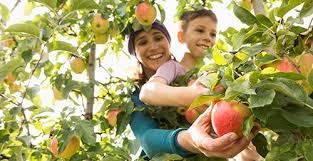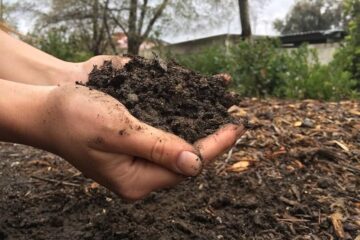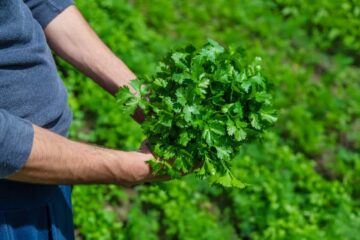How to Ensure Success When Buying Apple Trees: Professional Advice

The first step in ensuring success with apple trees is selecting the right variety for your needs and location. Britain’s climate is well-suited for many types of apple trees, but it’s important to choose a variety that thrives in your specific region. Consider factors such as climate, soil type, and resistance to diseases.
Early-season varieties, such as ‘Discovery’ and Katy apple trees, are good choices for areas with shorter growing seasons. Mid-season varieties like ‘James Grieve’ and ‘Egremont Russet’ are reliable producers and have a broad growing range. For those in warmer regions, late-season varieties such as ‘Bramley’s Seedling’ and ‘Sunset’ are excellent choices.
Additionally, consider what you want from your apple tree. Some varieties are better for eating fresh, while others are more suitable for cooking or cider production. For example, ‘Cox’s Orange Pippin’ is renowned for its flavor when eaten fresh, whereas ‘Bramley’s Seedling’ is a top choice for cooking due to its tartness and ability to retain texture when baked.
Purchasing Healthy Trees
When buying apple trees, it’s crucial to select healthy specimens from reputable nurseries. Bare-root trees are often the best choice as they establish more quickly than container-grown trees. Look for trees with a well-developed root system, free of rot or damage. The tree should have a straight, sturdy trunk with no signs of disease or pest damage.
Examine the graft union, the point where the rootstock and scion are joined. It should be clean and smooth, without cracks or excessive swelling. A healthy graft union is essential for the tree’s long-term health and productivity.
If you opt for container-grown trees, ensure the roots are not pot-bound. Overgrown roots can lead to poor establishment and stunted growth. Gently tap the tree out of its pot and check the roots. They should be white or light tan and spread evenly throughout the soil.
Timing Your Purchase
Timing is crucial when buying and planting apple trees. The best time to purchase and plant bare-root apple trees is during the dormant season, from late autumn to early spring. Planting during this period allows the tree to establish its root system before the growing season begins.
Container-grown trees can be planted at any time of the year, but avoid periods of extreme weather, such as frost or heatwaves. Spring and autumn are generally the best times for planting, as the weather is mild and the soil is workable.
Site Selection and Preparation
Choosing the right site for your apple tree is critical for its success. Apple trees require a location with full sun, at least six to eight hours of direct sunlight per day. They also need well-drained soil to prevent root rot and other water-related issues.
Check the pH level of your soil before planting. Apple trees do better in soil that is slightly acidic—pH 6.0 to 7.0—than in neutral soil. Use lime or sulphur to adjust the pH of your soil if it is excessively acidic or alkaline.
Prepare the planting site by removing any weeds or grass. These can compete with the young tree for nutrients and water. Dig a hole twice as wide and just as deep as the tree’s root system. This allows the roots to spread easily and establish a strong foundation.
Planting Your Apple Tree
Proper planting techniques are essential for the successful establishment of your apple tree. When planting a bare-root tree, soak the roots in water for a few hours before planting to rehydrate them. For both bare-root and container-grown trees, gently spread out the roots in the planting hole.
Position the tree so that the graft union is above the soil line. This prevents the scion from taking root and ensures the rootstock controls the tree’s growth. Backfill the hole with soil, firming it gently to remove air pockets. Water the tree thoroughly to settle the soil around the roots.
Mulching around the base of the tree helps retain moisture and suppress weeds. Use organic mulch, such as straw or wood chips, and keep it a few inches away from the trunk to prevent rot.
Pruning and Training
Proper pruning and training are vital for the health and productivity of your apple tree. Pruning helps establish a strong structure, promotes fruit production, and allows light and air to penetrate the canopy.
In the first year, focus on establishing the tree’s framework. For standard trees, choose a central leader and remove any competing stems. For bush or espalier forms, select the primary branches and prune back to encourage branching.
As the tree matures, annual pruning in late winter or early spring is essential. Remove any dead, diseased, or damaged wood. Thin out crowded branches to improve air circulation and reduce the risk of disease. Shorten the previous year’s growth to encourage fruiting spurs.
Training your tree to a specific form, such as a fan, espalier, or cordon, can optimize space and increase productivity. Use stakes or wires to guide the branches into the desired shape, securing them gently to avoid damage.
Pollination
Pollination is crucial for apple trees to produce fruit. Most apple varieties require cross-pollination with another compatible variety. Ensure you have at least two different apple trees that bloom at the same time within proximity. Crabapple trees are excellent pollinators and can enhance the fruit set of your apple trees.
If space is limited, consider purchasing a self-fertile variety. While these trees can produce fruit without a pollination partner, having another tree nearby will increase the yield and quality of the fruit.
Watering and Fertilization
Consistent watering is vital, especially during the first few years after planting. Young apple trees need regular watering to establish their root systems. Water the soil deeply and sparingly, letting it dry out a little bit in between applications. Mulching helps retain moisture and reduces the frequency of watering.
Apple trees can withstand some drought after they are established, but they will need extra watering when it’s dry outside. Be cautious not to overwater, as this can lead to root rot and other issues.
Fertilization is another key aspect of apple tree care. A balanced fertilizer with equal parts nitrogen, phosphorus, and potassium is ideal for young trees. Apply it in early spring and mid-summer to promote healthy growth. Avoid excessive nitrogen, as this can encourage lush foliage at the expense of fruit production.
As the tree matures, its nutritional needs will change. Conduct a soil test every few years to determine any deficiencies and adjust your fertilization regime accordingly. Organic options, such as compost or well-rotted manure, provide slow-release nutrients and improve soil structure.
Pest and Disease Management
Effective pest and disease management is essential for the health and productivity of your apple tree. Common pests in Britain include aphids, codling moths, and apple sawflies. Diseases such as apple scab, powdery mildew, and fire blight can also affect apple trees.
Regular monitoring is crucial. Inspect your tree frequently for signs of pests or disease. Early detection and intervention can prevent minor issues from becoming major problems.
Integrated pest management (IPM) strategies are effective in controlling pests with minimal chemical use. Encourage beneficial insects, such as ladybirds and lacewings, which prey on common pests. Sticky traps and pheromone traps can help monitor and reduce pest populations.
For disease management, good cultural practices are essential. Prune to improve air circulation and reduce humidity within the canopy. Remove fallen leaves and fruit, as they can harbor disease-causing organisms. If necessary, use fungicides and insecticides as a last resort, following the manufacturer’s instructions and observing recommended waiting periods before harvesting.
Harvesting and Storing Apples
Harvesting apples at the right time ensures the best flavor and storage life. Apples are typically ready for harvest in late summer to autumn, depending on the variety. Check for ripeness by gently lifting the apple and twisting. If it comes away easily, it is ready to harvest.
Store apples in a cool, humid environment to extend their shelf life. A temperature of 0-4°C is ideal. Avoid storing damaged or bruised fruit, as they can quickly rot and spoil others. Regularly check stored apples and remove any that show signs of decay.
Long-term Care
Ensuring the long-term success of your apple tree involves ongoing care and maintenance. Regular pruning, watering, and fertilization are essential. Monitor for pests and diseases and take action promptly to address any issues.
Renew the mulch annually to maintain soil moisture and fertility. Conduct soil tests periodically to adjust your fertilization regime based on the tree’s needs.
Additionally, consider the tree’s growth habit and adjust your pruning and training techniques accordingly. As the tree matures, its structure will change, and regular maintenance will ensure it remains healthy and productive.
Conclusion
Buying and growing apple trees in Britain can be a rewarding experience, providing fresh fruit and enhancing your garden. By carefully selecting the right variety, purchasing healthy trees, and following proper planting and care techniques, you can ensure the success of your apple trees. Regular monitoring and maintenance will keep your trees healthy and productive for years to come. With patience and dedication, you can enjoy bountiful harvests and the satisfaction of growing your own apples.











